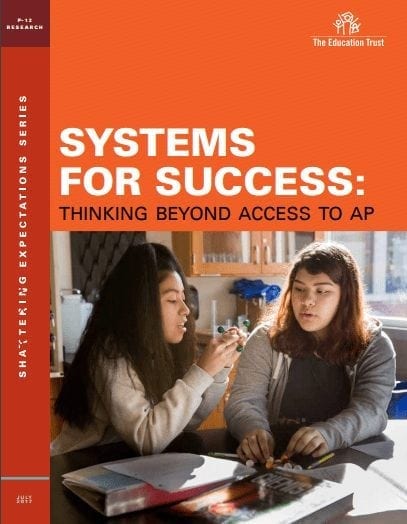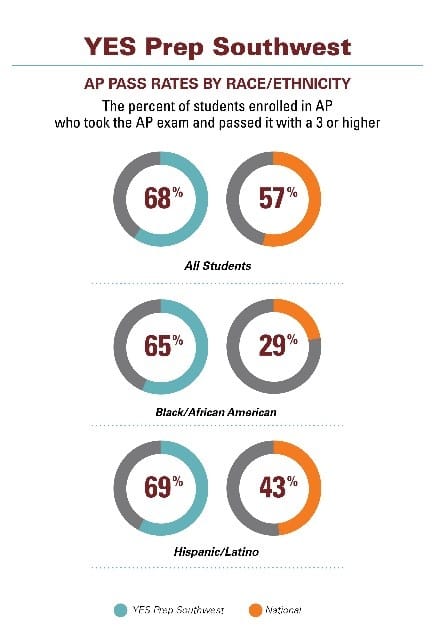Systems for Success: Thinking Beyond Access to AP
The national data are clear: more students of color are taking AP exams, but success rates for these students…

The national data are clear: more students of color are taking AP exams, but success rates for these students lag behind those of their peers.
With many ongoing efforts to expand access to Advanced Placement courses it’s critical that school leaders have an equal focus on supporting their students to success.
Between 2004 and 2013, the national AP test taking rate for Black students rose from 6 to 9 percent, and the rate for Latino students rose from 13 to nearly 19 percent. Yet while 57 percent of AP test takers overall scored a 3 or above in 2013, just 30 percent of Black AP test takers and 42 percent of Latino test takers scored at that level, which signifies readiness for college-level work.
To support this, “Systems for Success: Thinking Beyond Access to AP” explores the practices of two diverse high schools that have achieved the dual goals of enrolling more students in AP courses and supporting students of color and low-income students to pass AP exams at rates well above the national average.
Critical areas for school leaders to address include:
The two schools that we profile have built #Systems4Success to do just that.
Location: Alhambra, California
2014 AP Access Rate: 35% — 2014 Success Rate: 68%
School Size: 2,512 Students
Demographics: 1% Black, 51% Latino, 72% Low-Income
Alhambra boasts a school culture that promotes successful AP experiences for both students and teachers. According to Principal Duane Russell, “AP is rigorous for the teachers, just like it is for the kids.” This prompted Russell to create systematic support for teachers, including mentor teachers, attendance at AP professional development trainings, and a master schedule to manage all the additional classes, student requests, tutoring, and teachers’ schedules. This system ensured that the school’s supportive programs for the AP students and teachers didn’t conflict with each other, maximizing attendance and participation.

Location: Houston, Texas
2014 AP Access Rate: 40% — 2014 Success Rate: 68%
School Size: 926 Students
Demographics: 10% Black, 89.5% Latino, 87% Low-Income
Leaders at YES Prep Southwest work to align their curriculum, beginning in the sixth grade, by progressively incorporating more rigor and demanding more critical thinking skills that students will be required to handle in AP later in their academic careers. The school also helps teachers through regular collaborative workshops with other AP teachers in the YES Prep network so they can share resources, plan assignments, and take advantage of peer support.
